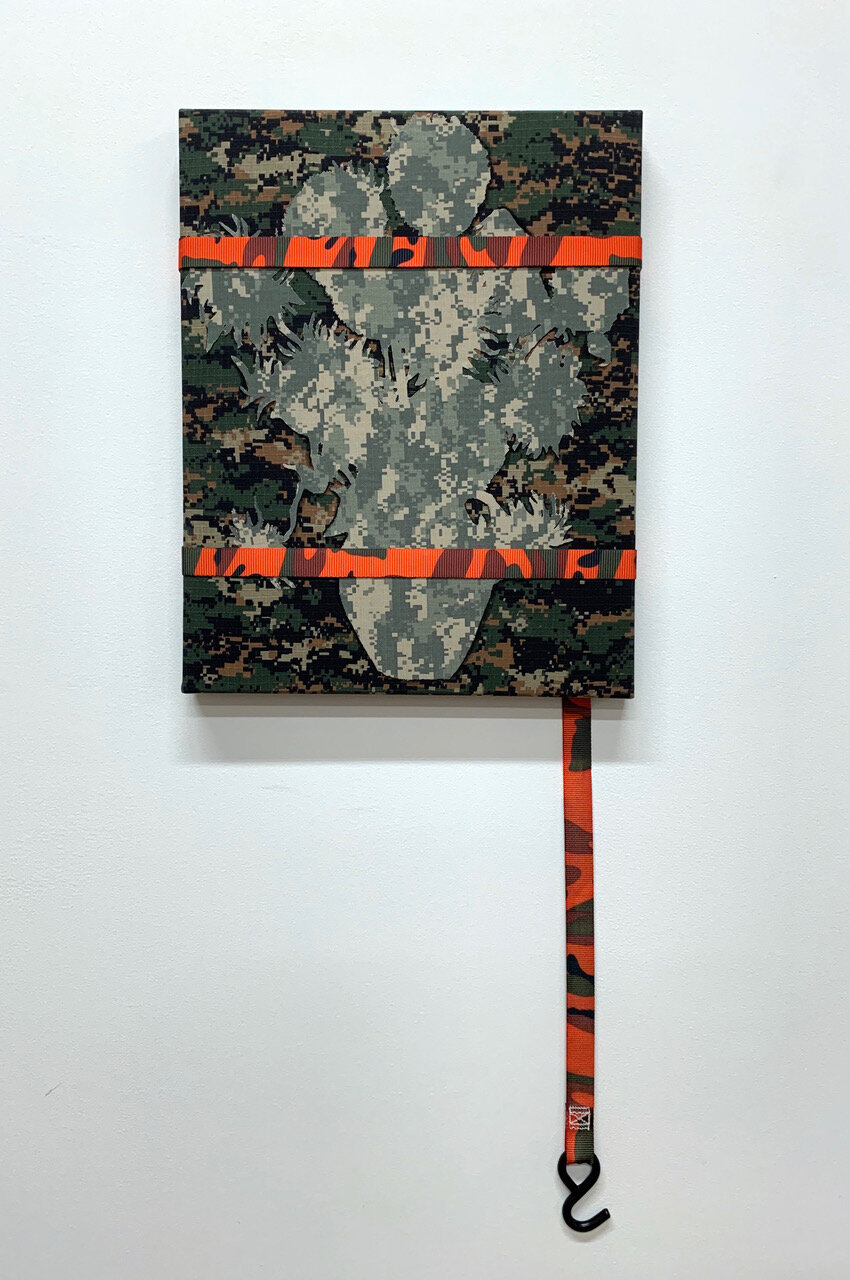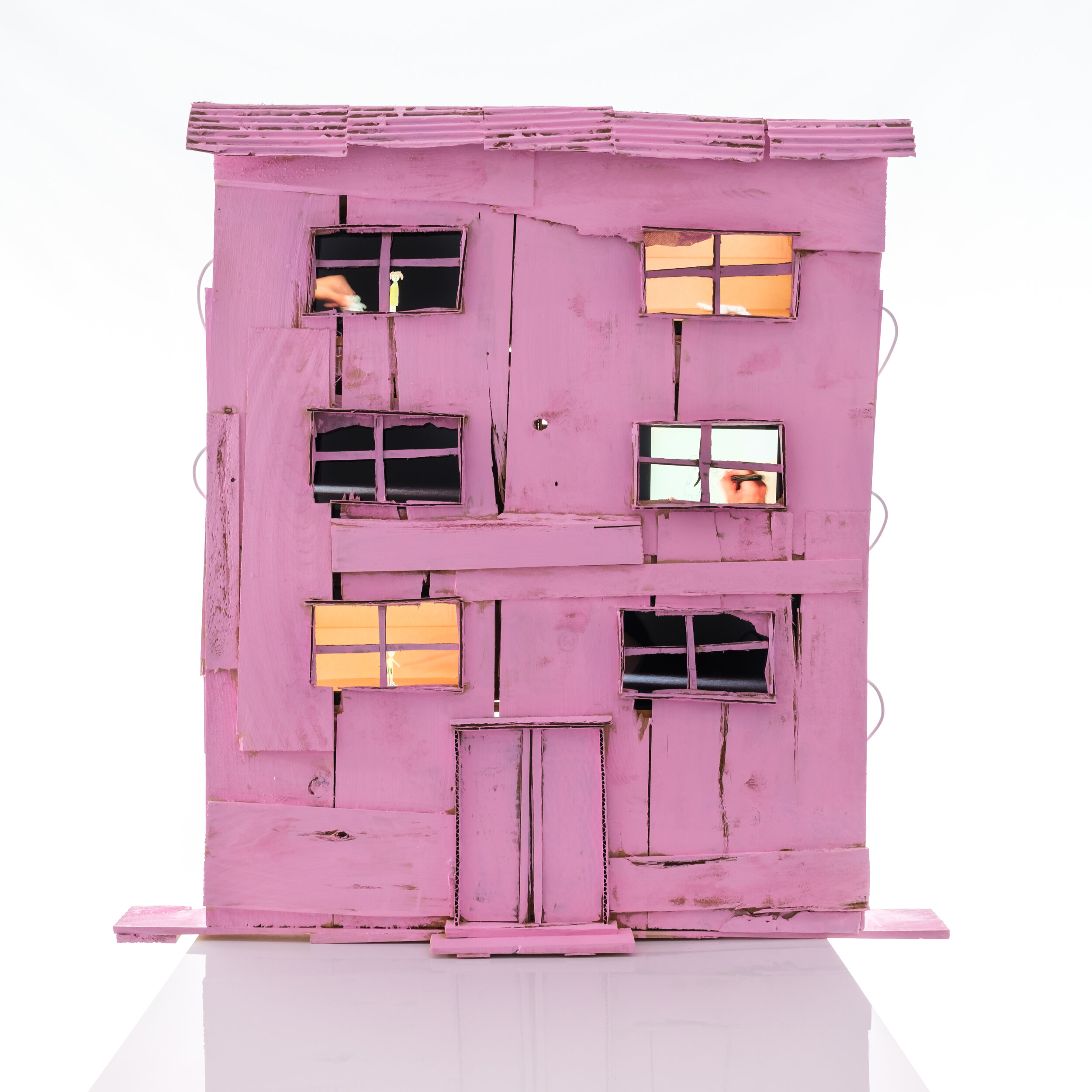Aceptar Una Exposición Colectiva Curated by Irene Clouthier September 2020 - December 2020
Featuring artwork by Erick Antonio Benitez, Gerardo Camargo, Irene Clouthier, Hoesy Corona, Muriel Hasbun, Carolina Mayorga, Wilfredo Valladares, and Fabiola Álvarez Yurcisin
Acceptance is a part of life. It is part of what makes us human. We accept and make choices every day of our lives.
Aceptar creates a dialogue between the artist and the viewer about the ways we accept a new reality through the ups and downs and our immigration and identity experiences as artists. More specifically, we explore how eight artists adapted and merged existing cultures to create a new hybrid cultural identity.
This exhibition represents diversity in the immigration experience; examining the struggles and extraordinary efforts to permanently move to another country with dreams, traditions, and cultures ingrained, and to become immersed in a new life. The eight artists featured here have all had to adapt to a different language and find a separate identity. Each day as immigrants and Americans, we work to accept our new circumstances, and we look to the millions who have come before us who have enriched the tapestry of this country.
Some of the artists here present their personal identity that shows us the intricacy and complexity of heritage. Other artists work on de parallelism or the creation of a new national symbol. While still other works address immigration status and remind us to see humans as humans. Another artist builds a column made of recycled food trays that contain remnants of moments, sharing in a group, joy, and community. One artist addresses identity by calling upon childhood memories of his home and family. We also present artworks that address the domestic violence, child abuse and sexual assault faced by women and families fleeing these circumstances in their native countries, only to face the same dangers on their journeys to the United States.
With Aceptar, we hope to highlight diversity in our immigration stories and open a dialogue about race, inclusion, class disparity, and gender equality. In order to create change, we must keep these conversations alive and strong. Aceptar is a reminder of the essence of this nation, a nation of immigrants, and allows us to imagine the kind of society we want to live in, one with a better future for all. We believe that art has the power to unite us.
Irene Clouthier-Carrillo
For more information please contact Lindsey@smithcenter.org.

Erick A. Benitez
Sunflowers After Van Gogh No.4. Acrylic and camouflage strap on stretched camouflage fabric 42” x 16” 2018.
From the series A City of Magic Carpets, an exhibition exploring an imaginative place between interior and exterior landscapes through the language of painting, textiles, and tactile materials. Motifs of nature, fashion, and objects found within interior spaces are references used to reinvent ways of seeing material and the weight it carries. A City of Magic Carpets explores the nuances of materiality through its relation with the human body and its figurative connection with surrounding landscapes.
Drawing inspiration from the audio poem, The Bristol Project by Vito Acconci, this work examines a parallel connection of imagery and non-fictional worlds intersecting one another into abstractions and visual metaphors. The line, “Now it's the land itself here who is a body, a body of land, it's the water itself that's a body of water,” expresses the notion of imagery we understand outside of its common context. Like Acconci’s word play, the textile paintings found in this work are constantly reinterpreted and reimagined outside of it’s ordinary function.
Through the use of camouflage textiles, floral embroidery imagery and thermal mylar blankets, A City of Magic Carpets opens a metaphysical dialogue to dissolve and reexamine our understanding of landscape. The way the material transcends past it’s psychological associations, gives new perspective on how one can interpret the concept of landscape outside of the common human experience.

Gerardo Camargo
You Can’t be Hungry in the Land of the Free. Mixed media Installation with false marble column, and aluminum trays with remains of Latin food, (Salvadorian pupusas, Peruvian chicken, Mexican tacos, Guatemalan tamales), 2018.
Looking at architecture as a symbol of human desires, as well as a physical representation of structures of power, dominance, and control, I work with discarded materials mostly from domestic construction sites, and seek out pre-transmitted messages that I utilize in abstract imagery.
I like to refer to my practice as an intervention in or disruption of the process of labor and use of materials. My intention is to create an aesthetic that appropriates and rearranges everyday micro gestures to create a connection with the history of places, the labor force intrinsic in those processes (mostly comprised by minorities), and how that hidden but vital energy reacts as part of the DNA of places and social structures.
On Acceptance: In order to be able to grow as a society, as a species, we need to accept the implications our acts contain. We need to accept our interconnectedness and the necessity to accept one another, that no human is illegal, that there is not a legal o racial superiority but a need to work together to set new rules in accordance with creating a better world.

Irene Clouthier
Objetos Cotidianos/Everyday Objects Series. Brushpen markers (ink & watercolor) on acid free paper.
Everyday Objects is a series of watercolor and ink drawings, that started over 5 years ago, with an idea of simple traces done with a marker on the paper (no pencil or eraser) of the things, objects and spaces that surround me. The project has become a journal of trips, intimate spaces and places I visit, and the the people that host me, as well as the places I have lived and my possessions.
Light Switch (entrance), 2018
Hospital Bed (mom), 2017
Clothes Line, 2017
Altata Living Room, 2017

Irene Clouthier
Objetos Cotidianos/Everyday Objects Series. Brushpen markers (ink & watercolor) on acid free paper.
Bathroom (Baño de las mujeres), 2018
Orange Living Room, 2018
Pánuco, 2018
Altata, Mosaic Table, 2017

Irene Clouthier
Objetos Cotidianos/Everyday Objects Series. Brushpen markers (ink & watercolor) on acid free paper.
Taqueria (Guacamaya), 2017
Robot & Napkin, 2018
Waiting Room, 2018
Kidney Problem, 2017

Hoesy Corona
White Constructions, 2016-Present
This project considers the arbitrary and deliberate construction of race in the United States and its negative effects on black and brown people. The series analyzes race as a deliberate social construct created by those in power to subjugate non-white people while critiquing the influential construction and deconstruction of language and its impact on human experiences. The symbolic and imaginary constructs in WHITE CONSTRUCTIONS challenges the viewer to reconsider and reconstruct their personal and political relationship to race and how it informs their interactions with others.

Carolina Mayorga
Beautiful Facade. Video-tableux with 6 video screens, shims, house paint and recycled cardboard, 2020.
My work addresses issues of social and political content. Comments on migration, war, identity, translate into video, performance art, site-specific installations, and two-dimensional media in the form of painting, photography and drawing.
The works presented at ACEPTAR are part of the series PINK Ranchos and other Ephemeral Zip Codes which responds to my obsession with PINK, a beautifying agent that applied to skin, objects, creatures, provides acceptance and emotional gratification.
In Beautiful Façade, a video-tableaux specifically created for this exhibition, I apply the pigment to women and children (those typically associated with home) to create a pleasing environment of contrasting experiences of those living inside ranchos, chozas, and other improvised dwellings dictated by privation and abandonment.

Muriel Hasbun
Barquitos from the Archive is inspired by the hundreds of paper boats that individuals have contributed to the Barquitos de Papel collective archive and video installation since it premiered at the Cultural Center of Spain in San Salvador in 2006, as part of my Fulbright Scholar project, Backdrop: The Search for Home / Terruño: Detrás del telón.
Each barquito is an individual portrait, and as little vessels, carry the power of our individual and collective testimony. From San Salvador to Buenos Aires to Newark to Dallas, to Brussels and to Washington, D.C., we’re encouraged to remember, to come together to (re)discover our own story, using copies of our family documents and photographs. The tactile process of making paper boats engenders connection, even healing. Through the act of participating, we claim our individual story in the communal space. In photographing these barquitos, I realize that the details hidden behind the folds resonate as much as those readily seen.
These photos of paper boats stand on their own as documents of our diverse journeys. They highlight our individuality while gesturing that together, we may find our belonging.

Wilfredo Valladares
Unmasked. Cast iron and rolling pins.
Childhood memories are the roadmap of my artistic research. Some of my early memories take me back to a creative space where I began training my observation and appreciation for form, time and space. I give credit to my mother who guided me through understanding empirical concepts of fashion design, architecture, drawing, painting and earthworks. Principles of nature were taught by my father whose way of life was rooted in our ancestral Mayan traditions and culture. This combined gift became the engine that forged the sensors that allow me to absorb and process visual information wherever my mind is placed. To be able to endure the life of an immigrant one must hold on to their memories. My body immigrated to the United States, but my mind was still in Honduras. It has been this duality and tension that informed my art concepts as I go through with my life inquiry. Documenting trajectory is part of my process of gathering and storing information that later becomes part of the ingredients to be mixed with physical materials shaped by genuine labor and instinctual thoughts. Migration narratives have been a recurrent subject in the work I produce. It is a response to human struggle, migrant labor, displacement, labels, assimilation and the interconnectedness of political and socioeconomic factors. I use Mayan mythology and symbolism to inject mystery and spiritual power as a reminder of one of the earliest world migrations. When historians describe the history of the people of the Mesoamerica region, they are usually referred to as ancient or no longer in existence, when in fact still there. Cultural tradition, languages, art, architecture, cuisine are still heavily influenced by the memories of that history and practice. Presently, my studio practice is steeped in memories collected throughout the journey I took 30 years ago —they are the catalyst of how I have been able to process my cross-cultural experiences through my art.

Fabiola Alvarez Yurcisin
Orange Cage-Immigrant Loops, 2018. White steel cage, orange iridescent ribbon, double-sided adhesive tape, mirror, wood rods, vinyl letters, and LED lights.
As an artist my work picks up what human progress sheds. I create objects that respond to systems that want to keep us under control or within certain limits. My work lives between my intuitive home of Mexico and my rational home of the United States.

Carolina Mayorga
Mixed media video-sculpture, watercolor and ink on paper, 2018.

Fabiola Alvarez Yurcisin
Rolodex, 2016. Steel rolodex case, black paint, yellow and transparent card protectors, transfer tracing paper, and A-Z plastic dividers, exercise wheel, audio cassette tape, and notebook with list of words.
Rolodex takes an object that is synonymous to the sum of a person’s accumulated contacts, but instead of people’s names I explore all the words that we as a culture, associate with the word “power” and “hope”. All the words are typed in braille to highlight how these two words function as invisible forces in our lives. This obsolete object functions as a vault that holds the gravitational forces that push and pull are daily actions.

Fabiola Alvarez Yurcisin
Bald Eagles, 2017. Wooden frames, beveled glass, cast soap, soap paint and glass adhesive.
